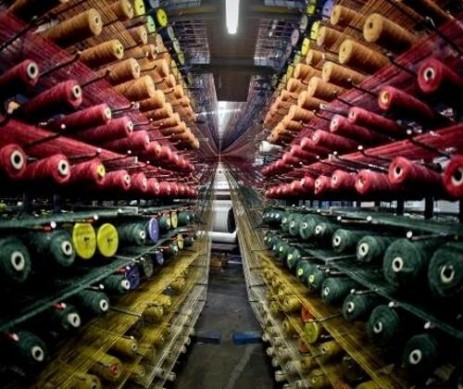Technology and variety of fibers
Machine-woven carpets can be made through various technologies, materials and different carpet densities. One of the most popular carpets in Iran is made from Acrylic. Acrylic is very similar to natural fibers (wools), has high durability and high quality compared to others, making it a good rug fabric although acrylic carpets are little more expensive than other types of carpets.
In addition to carpets made of 100% acrylic, composition of acrylic and wools/polyester is common as well. Natural wools are more expensive than artificial fibers thus are used less in machine-woven carpets. Further artificial fibers used in machine made carpets are polyester (artificial silk) and polypropylene. Polyester gives shinny look to carpet and makes them look like silky carpets and as they have low fluffing (pilling) similar to acrylic and wool carpets, they have become more popular among some people in spite of the fact that they have less durability.
Reed (Shane) and Density
Two other important factors in machine-woven carpets are Density and Shane /ʃɒːˈne/. Shane (reed) is referred to the number of knots in each square meter of width of carpet. For example, a carpet with 1000 Shane. In a 3*4 square meter carpet, has 3000 knots in width of the carpet. The number of latitude knots are determined by metal Shanes of carpet loom. Density is also referred to the number of knots in each square meter of length of carpet. Generally, the number of longitude knots are more than latitude knots. As in a carpet with 2000 density and 2*3 dimension, there are 6000 knots in length of the carpet.
The more density and Shanes machine-woven carpets have, the more they resemble to hand made carpets.
Durability
Machine-woven carpets can last up to 30 years depending on their fibers and the way they were maintained. Restraining these carpets from wetness and washing them correctly, increase longevity.
Patterns
Previously patterns of machine-woven carpets were inspired by hand-woven rugs which were insist of medallion and corner Toranj /toˈɾænd͡ʒ/, Lachak /laCHak/ and hashie /häSHēye/. As time passed and people’s taste and interest changed along with importation of carpets from Belgium, Turkey and some other countries, patterns of machine-woven carpets changed as well. Modern designs including geometric shapes, artistic shapes and cartoon characters are becoming more popular these days. Although machine made carpets with modern designing is extending, traditional designs, especially oriental hand-woven rug designs, has still its own customers.
Original Persian designs are well-known worldwide. Designs such as Harris / ˈharēs/, Maahi /məˈhi/, Naen /ˈnaˈēn/, Chaleshtar /ˈCHä leSHˈtar/ and etc.
Modern Machine-Woven Carpets
In addition to traditional machine made rugs which were manufactured with hand-woven standards, modern machine made carpets are being produced with variety of shapes, patterns and qualities. For instance, shaggy rugs are carpets with longish disordered fibers and are used for modern decoration in special places.
Quality of Machine-Woven Carpets
Different types of machine made carpets with different qualities are manufactured for various applications. Using high quality fibers for carpets as well as quality control in the process of manufacturing and most importantly following standard carpet maintenance methods, lead to further durability and better quality of the product.[/vc_column_text][/vc_column][/vc_row]

